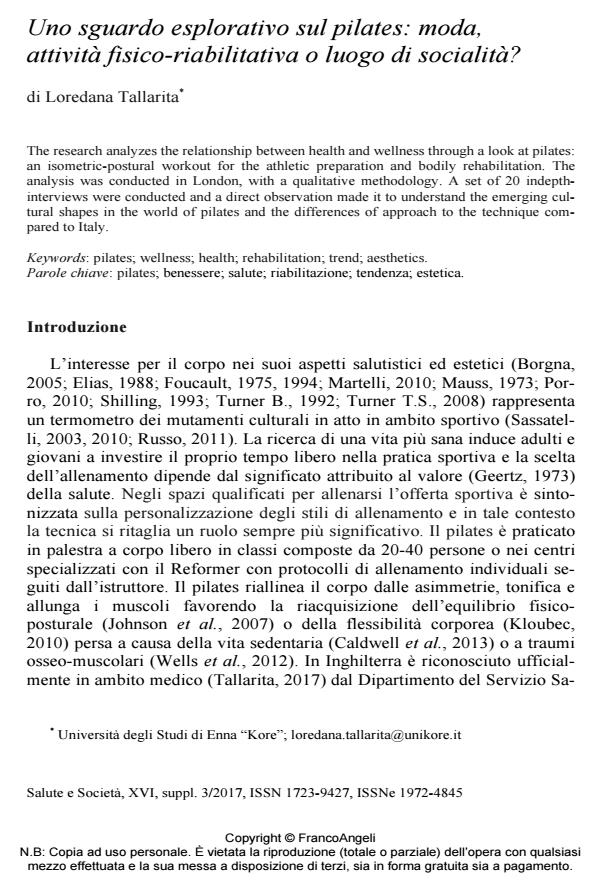Uno sguardo esplorativo sul pilates: moda, attività fisico-riabilitativa o luogo di socialità?
Titolo Rivista SALUTE E SOCIETÀ
Autori/Curatori Loredana Tallarita
Anno di pubblicazione 2017 Fascicolo 2017/3-Suppl.
Lingua Italiano Numero pagine 18 P. 118-135 Dimensione file 126 KB
DOI 10.3280/SES2017-SU3008
Il DOI è il codice a barre della proprietà intellettuale: per saperne di più
clicca qui
Qui sotto puoi vedere in anteprima la prima pagina di questo articolo.
Se questo articolo ti interessa, lo puoi acquistare (e scaricare in formato pdf) seguendo le facili indicazioni per acquistare il download credit. Acquista Download Credits per scaricare questo Articolo in formato PDF

FrancoAngeli è membro della Publishers International Linking Association, Inc (PILA)associazione indipendente e non profit per facilitare (attraverso i servizi tecnologici implementati da CrossRef.org) l’accesso degli studiosi ai contenuti digitali nelle pubblicazioni professionali e scientifiche
The research analyzes the relationship between health and wellness through a look at pilates: an isometric-postural workout for the athletic preparation and bodily rehabilitation. The analysis was conducted in London, with a qualitative methodology. A set of 20 indepth-interviews were conducted and a direct observation made it to understand the emerging cul-tural shapes in the world of pilates and the differences of approach to the technique compared to Italy.
Parole chiave:Pilates; benessere; salute; riabilitazione; tendenza; estetica.
- Sport and Quality of Life Loredana Tallarita, pp.211 (ISBN:978-3-030-93091-2)
Loredana Tallarita, Uno sguardo esplorativo sul pilates: moda, attività fisico-riabilitativa o luogo di socialità? in "SALUTE E SOCIETÀ" 3-Suppl./2017, pp 118-135, DOI: 10.3280/SES2017-SU3008